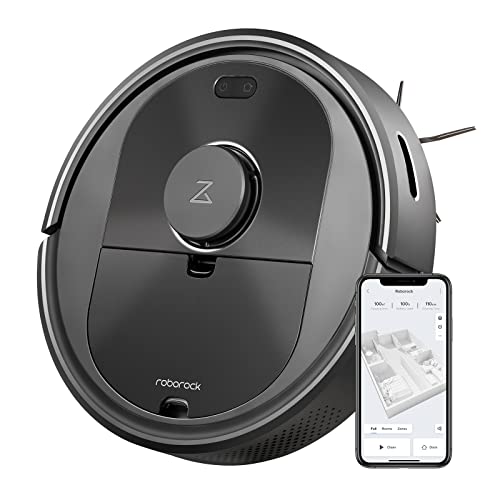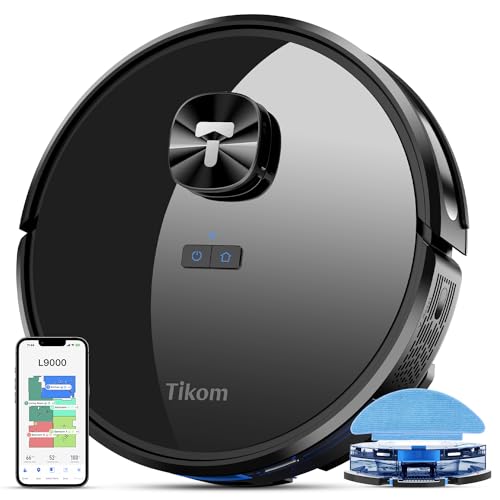See What Lidar Robot Navigation Tricks The Celebs Are Making Use Of
페이지 정보

본문
 lidar Robot navigation (annunciogratis.Net)
lidar Robot navigation (annunciogratis.Net) LiDAR vacuum robot lidar navigation is a sophisticated combination of mapping, localization and path planning. This article will explain these concepts and show how they function together with an example of a robot achieving a goal within the middle of a row of crops.
LiDAR vacuum robot lidar navigation is a sophisticated combination of mapping, localization and path planning. This article will explain these concepts and show how they function together with an example of a robot achieving a goal within the middle of a row of crops.LiDAR sensors are low-power devices that can extend the battery life of robots and decrease the amount of raw data required to run localization algorithms. This enables more variations of the SLAM algorithm without overheating the GPU.
LiDAR Sensors
The heart of lidar systems is their sensor, which emits pulsed laser light into the environment. The light waves hit objects around and bounce back to the sensor at a variety of angles, based on the structure of the object. The sensor is able to measure the amount of time required to return each time and uses this information to calculate distances. Sensors are mounted on rotating platforms, which allow them to scan the area around them quickly and at high speeds (10000 samples per second).
LiDAR sensors can be classified based on the type of sensor they're designed for, whether applications in the air or on land. Airborne lidar systems are usually attached to helicopters, aircraft, or UAVs. (UAVs). Terrestrial LiDAR systems are typically mounted on a static robot platform.
To accurately measure distances, the sensor needs to know the exact position of the robot at all times. This information is usually captured through an array of inertial measurement units (IMUs), GPS, and time-keeping electronics. LiDAR systems utilize sensors to compute the precise location of the sensor in space and time. This information is then used to build up a 3D map of the environment.
lidar robot vacuum cleaner scanners are also able to recognize different types of surfaces which is especially useful for mapping environments with dense vegetation. When a pulse passes through a forest canopy, it will typically produce multiple returns. The first return is attributable to the top of the trees while the last return is related to the ground surface. If the sensor records each peak of these pulses as distinct, this is called discrete return LiDAR.
Discrete return scans can be used to determine surface structure. For instance forests can result in one or two 1st and 2nd return pulses, with the last one representing bare ground. The ability to divide these returns and save them as a point cloud makes it possible to create detailed terrain models.
Once an 3D map of the environment has been created, the robot can begin to navigate using this data. This process involves localization, creating a path to reach a navigation 'goal,' and dynamic obstacle detection. This process identifies new obstacles not included in the original map and then updates the plan of travel in line with the new obstacles.
SLAM Algorithms
SLAM (simultaneous mapping and localization) is an algorithm which allows your robot to map its environment and then determine its position in relation to the map. Engineers make use of this information for a range of tasks, such as planning routes and obstacle detection.
To allow SLAM to work, your robot must have sensors (e.g. A computer with the appropriate software for processing the data and a camera or a laser are required. You will also require an inertial measurement unit (IMU) to provide basic information about your position. The system can track your robot's location accurately in an unknown environment.
The SLAM system is complicated and offers a myriad of back-end options. Regardless of which solution you choose for your SLAM system, a successful SLAM system requires a constant interplay between the range measurement device and the software that extracts the data and the robot or vehicle itself. This is a dynamic process that is almost indestructible.
As the robot moves around and around, it adds new scans to its map. The SLAM algorithm then compares these scans to the previous ones using a method called scan matching. This allows loop closures to be identified. The SLAM algorithm is updated with its robot's estimated trajectory when the loop has been closed identified.
Another issue that can hinder SLAM is the fact that the environment changes over time. If, for example, your robot is walking down an aisle that is empty at one point, and then encounters a stack of pallets at a different point, it may have difficulty connecting the two points on its map. This is where the handling of dynamics becomes crucial and is a common feature of the modern Lidar SLAM algorithms.
SLAM systems are extremely effective in 3D scanning and navigation despite these limitations. It is particularly beneficial in situations where the robot isn't able to rely on GNSS for its positioning for positioning, like an indoor factory floor. It's important to remember that even a properly configured SLAM system can be prone to errors. It is essential to be able to spot these flaws and understand how they impact the SLAM process in order to rectify them.
Mapping
The mapping function builds an outline of the robot's environment, which includes the robot itself including its wheels and actuators, and everything else in its field of view. This map is used to aid in location, route planning, and obstacle detection. This is an area where 3D lidars can be extremely useful, as they can be used like the equivalent of a 3D camera (with a single scan plane).
Map creation is a time-consuming process, but it pays off in the end. The ability to create a complete and consistent map of a robot's environment allows it to navigate with great precision, and also around obstacles.
In general, the greater the resolution of the sensor, the more precise will be the map. However there are exceptions to the requirement for high-resolution maps: for example floor sweepers may not require the same level of detail as an industrial robot that is navigating factories with huge facilities.
There are many different mapping algorithms that can be employed with LiDAR sensors. Cartographer is a popular algorithm that utilizes a two phase pose graph optimization technique. It adjusts for drift while maintaining an unchanging global map. It is particularly effective when paired with Odometry.
GraphSLAM is a second option which uses a set of linear equations to represent the constraints in diagrams. The constraints are represented as an O matrix, and a vector X. Each vertice of the O matrix represents the distance to the X-vector's landmark. A GraphSLAM Update is a series subtractions and additions to these matrix elements. The end result is that both the O and X Vectors are updated to account for the new observations made by the robot.
Another efficient mapping algorithm is SLAM+, which combines mapping and odometry using an Extended Kalman filter (EKF). The EKF alters the uncertainty of the robot's location as well as the uncertainty of the features that were mapped by the sensor. The mapping function will make use of this information to estimate its own location, allowing it to update the underlying map.
Obstacle Detection
A robot should be able to perceive its environment so that it can avoid obstacles and get to its destination. It uses sensors like digital cameras, infrared scanners, laser radar and sonar to detect its environment. It also makes use of an inertial sensor to measure its speed, position and orientation. These sensors enable it to navigate without danger and avoid collisions.
One of the most important aspects of this process is the detection of obstacles that consists of the use of sensors to measure the distance between the robot vacuum obstacle avoidance lidar and obstacles. The sensor can be mounted on the robot, in an automobile or on poles. It is important to keep in mind that the sensor can be affected by a variety of elements like rain, wind and fog. Therefore, it is essential to calibrate the sensor prior each use.
The most important aspect of obstacle detection is to identify static obstacles, which can be accomplished using the results of the eight-neighbor-cell clustering algorithm. This method isn't very precise due to the occlusion caused by the distance between the laser lines and the camera's angular speed. To address this issue, a technique of multi-frame fusion has been used to improve the detection accuracy of static obstacles.
The method of combining roadside camera-based obstacle detection with a vehicle camera has been proven to increase the efficiency of data processing. It also reserves redundancy for other navigation operations, like planning a path. This method produces an accurate, high-quality image of the environment. The method has been tested with other obstacle detection methods, such as YOLOv5 VIDAR, YOLOv5, and monocular ranging, in outdoor comparison experiments.
The results of the test revealed that the algorithm was able to accurately identify the height and location of an obstacle, as well as its rotation and tilt. It also had a great performance in identifying the size of obstacles and its color. The method also demonstrated excellent stability and durability even in the presence of moving obstacles.
- 이전글Learn More Plumbing Services Los Angeles And The Mel Gibson Effect 24.09.11
- 다음글폰테크 재정적 독립 팁을 활용하세요 - 이 10가지 팁을 읽어보세요 폰테크 24.09.11
댓글목록
등록된 댓글이 없습니다.
